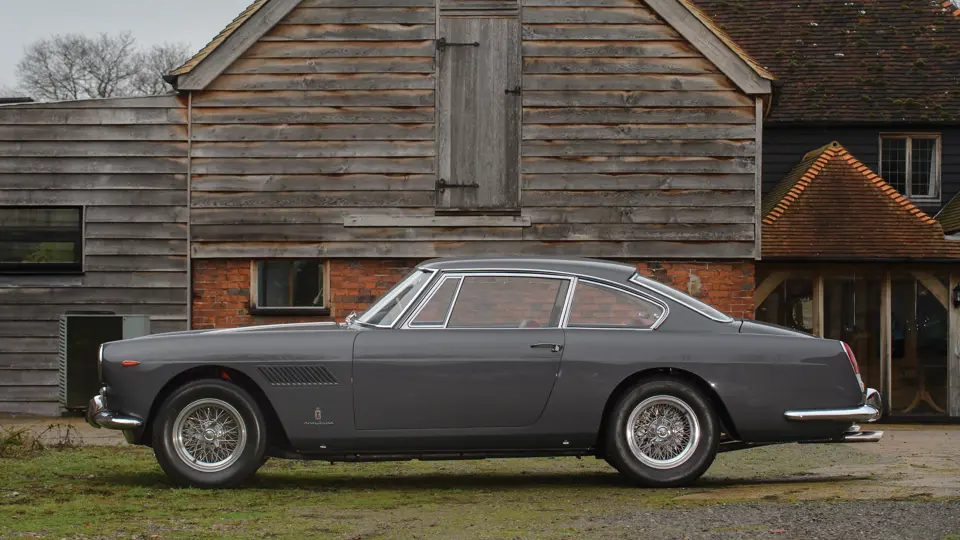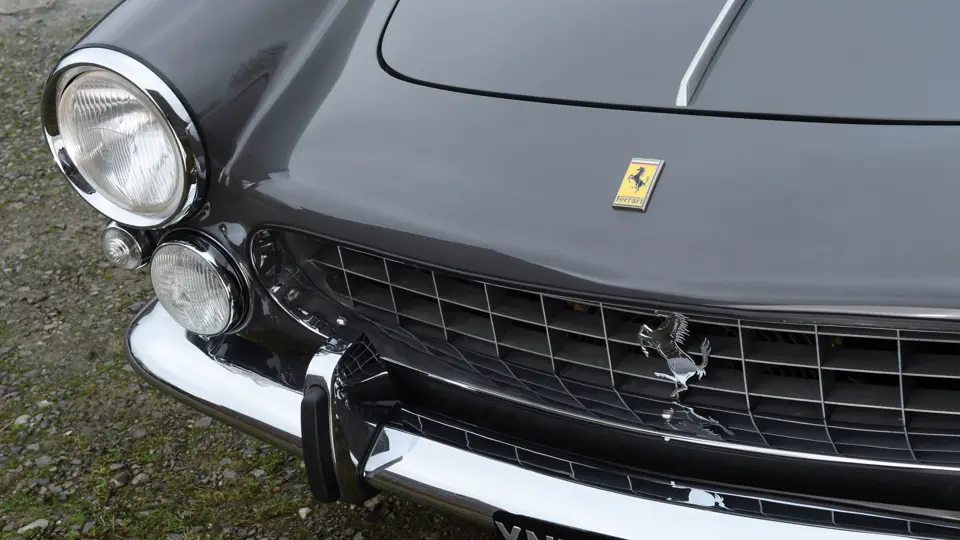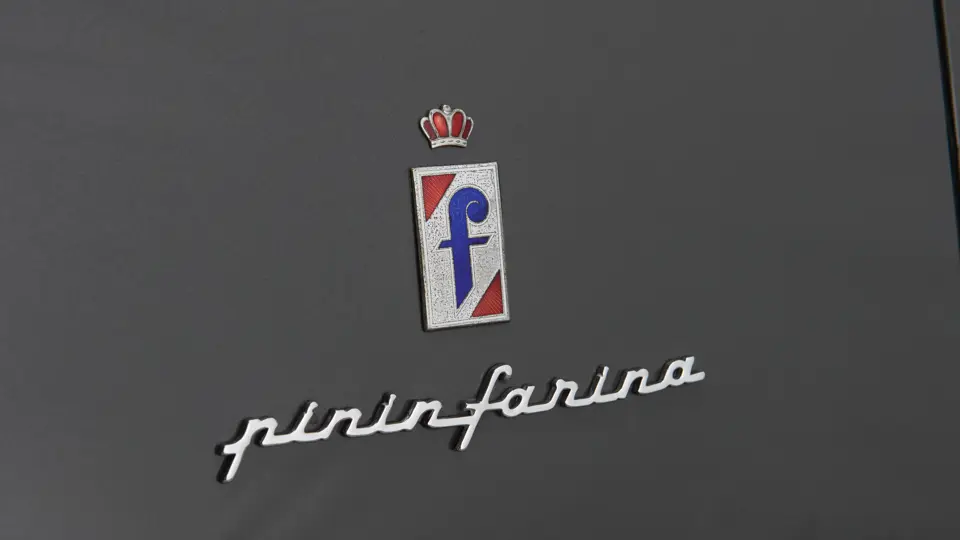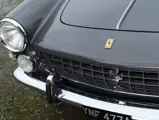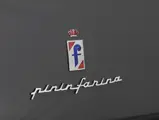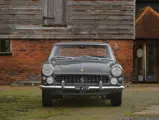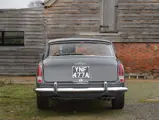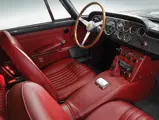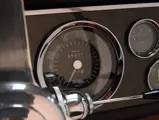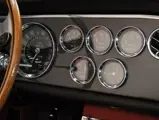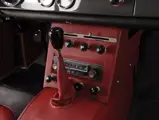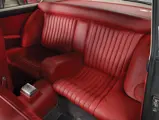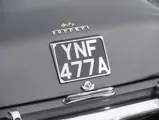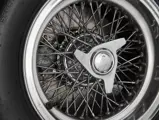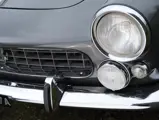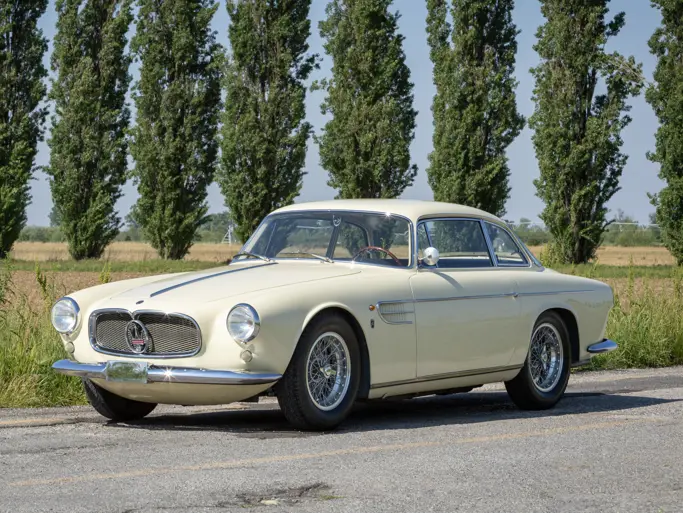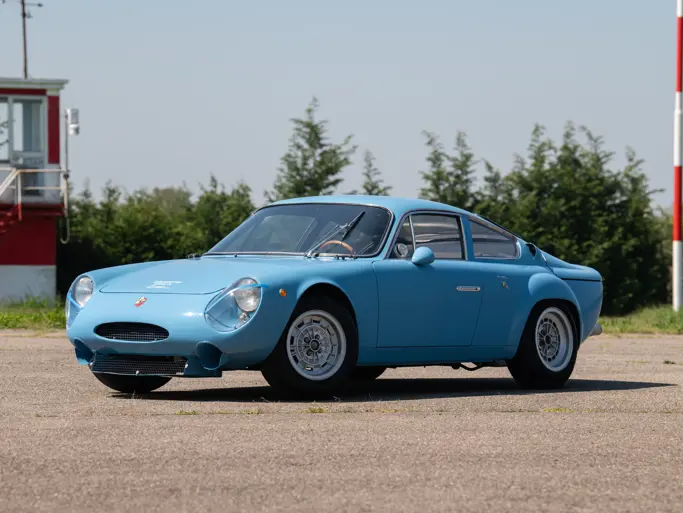
1963 Ferrari 250 GTE 2+2 Series III by Pininfarina
{{lr.item.text}}
€470,400 EUR | Sold
{{bidding.lot.reserveStatusFormatted}}
- One of the finest 250 GTEs in existence
- Highly desirable Series III example in Grigio Scuro
- Full concours restoration by GTO Engineering
- Fully matching numbers with Ferrari Classiche certification
- Une des plus belles 250 GTE existantes
- Exemplaire éminemment désirable de la série III, de teinte "Grigio Scuro"
- Restauration concours effectuée par GTO Engineering
- Numéros concordants ("matching numbers") et certification Ferrari Classiche
240 bhp, 2,953 cc SOHC Colombo V-12 engine with twin-choke Weber 36DCS carburettors, four-speed transmission with overdrive, independent front suspension, live rear axle with leaf springs and coil springs, and four-wheel hydraulic disc brakes. Wheelbase: 2,600 mm
Moteur V12, 2 953 cm³, 1 ACT par banc, 240 ch, carburateurs Weber 36DCS, transmission manuelle à quatre rapports plus overdrive, suspension avant indépendante, essieu arrière rigide avec ressorts à lames et ressorts hélicoïdaux, freins à disque à commande hydraulique sur les quatre roues. Empattement 2 600 mm
Due to increasing financial pressure on Enzo Ferrari’s company from burgeoning racing costs, Ferrari needed a commercial success in the grand touring market to keep itself afloat in the early 1960s. Aston Martin and Maserati had both proven a strong market for the 2+2 design, so a 2+2 was an obvious choice for Ferrari. Enzo also wanted a four-seater car as a vehicle for his chauffeur, himself, his wife, and the family dog!
The 250 GTE made its debut at the 1960 24 Hours of Le Mans in the hands of the course marshal before making its official debut at the Paris Salon later that year. The GTE was one of Ferrari’s most successful road cars, as 954 examples were delivered over a four-year production run. Staying true to its competition roots, Ferrari used the same chassis as the 250 GT LWB Tour de France, but the engine was moved eight inches forward. Pininfarina’s design raised the rear section of the roof, providing more cabin space for rear seats whilst still maintaining the same wheelbase and increasing the front and rear track.
The 250 GTE Series III offered here is arguably one of the finest examples in existence. Chassis number 4139 GT was delivered in February 1963 via the Bologna dealer S.I.V.A.M. to Mr Evain and was finished in the very tasteful combination of Grigio Scuro and Pelle Rossa. During the 1960s, it was exported to the United States and by late 1969, it was offered privately for sale by Raymond Gettings of Charleston, South Carolina.
In September 1969, Gettings sold 4139 GT to Mr Thomas White of Greenville, South Carolina, who decided to carry out a complete restoration. White dismantled 4139 GT in its entirety, carefully storing all the parts, but the restoration went no further. Chassis number 4139 GT was kept in this state for the next four decades, never being parted out for spares, before being acquired by GTO Engineering in 2011 for its current owner.
GTO Engineering set about restoring 4139 GT over three years to concours condition, keeping as many original parts as possible. All of the mechanicals were completely rebuilt and it was refinished in its original colours and specification. For the interior trim, 4139 GT was transported to Tappezzeria Luppi in Modena. Following its restoration, 4139 GT was granted Red Book certification by Ferrari Classiche, confirming its outstanding originality. Today, 4139 GT shows just over 29,000 genuine kilometres on its odometer, roughly 300 of which were added since its restoration.
In recent years, enthusiasts’ attention has turned to the 250 GTEs, and many collectors have come to appreciate the comfort, style, and usability that made them so popular in the early sixties. Many 250 GTEs have led difficult lives, so to find such an original and perfectly restored example is very rare indeed.
Du fait de l’accroissement de la pression financière sur l’entreprise d’Enzo Ferrari, due à l’augmentation des dépenses liées à la compétition, Ferrari avait besoin au début des années 1960 de succès commerciaux sur le marché des voitures de Grand Tourisme pour se maintenir à flots. Aston Martin et Maserati ayant déjà prouvé l’existence d’un véritable marché pour les 2+2, le choix de cette architecture s’imposait pour Ferrari. Enzo souhaitait aussi une quatre places capable de transporter son chauffeur, lui-même, son épouse et le chien de la famille !
La première apparition publique de la 250 GTE eut lieu pendant les 24 Heures du Mans 1960, où elle fut confiée au directeur de course, avant sa présentation officielle au Salon de Paris, plus tard dans l’année. La GTE a été un des plus grands succès commerciaux de Ferrari, avec 954 exemplaires livrés pendant ses quatre années de production. Restant fidèle à ses racines ancrées dans la compétition, Ferrari a utilisé la même base que celle de la 250 Tour de France châssis long, mais le moteur était installé environ 20 cm plus en avant. Le dessin de Pininfarina relevait la partie arrière du toit, ce qui permettait ainsi de disposer de davantage d’espace pour les sièges arrière, tout en conservant le même empattement mais en augmentant les voies avant et arrière.
La 250 GTE Série III proposée ici est probablement une des plus belles existant aujourd’hui. Le châssis n° 4139 GT fut livré en février 1963 par l’agent S.I.V.A.M. de Bologne à un M. Evain et se présentait dans une combinaison du meilleur goût, "Grigio Scuro" et intérieur "Pelle Rossa". Dans les années 1960, elle a été exportée vers les États-Unis et, à la fin de 1969, proposée à la vente par Raymond Gettings, de Charleston (Caroline du Sud).
En septembre 1969, Gettings a vendu cette voiture (châssis 4139 GT) à M. Thomas White, de Greenville en Caroline du Sud, qui entreprit une restauration complète. La voiture fut alors entièrement démontée, toutes les pièces soigneusement rangées mais cette restauration n'allait pas plus loin. Le châssis 4139 GT a ensuite été conservé ainsi pendant quatre décennies, sans jamais se départir de ses pièces, avant que GTO Engineering s’en porte acquéreur en 2011 pour le compte de l'actuel propriétaire.
GTO Engineering a alors entrepris une restauration qui a duré trois ans, pour amener 4139 GT à un état concours tout en conservant le plus grand nombre de composants d'origine. Tous les éléments mécaniques ont été entièrement refaits et la voiture a retrouvé ses couleurs et ses spécifications d’origine. Pour la réfection de la sellerie, 4139 GT a ensuite été envoyée à Modène chez Tappezzeria Luppi. Après cette restauration, 4139 GT a obtenu son livret rouge de certification fourni par Ferrari Classiche, confirmant son remarquable état. Aujourd’hui, le compteur de 4139 GT affiche à peine plus de 29 000 km d'origine, dont 300 ont été parcourus depuis la restauration.
Depuis quelques années, l’intérêt des passionnés s’est tourné vers les 250 GTE, et de nombreux collectionneurs ont commencé à en apprécier le confort, le style et la facilité d’utilisation qui ont fait son succès au début des années 1960. Nombre de 250 GTE ont connu une vie difficile. Il devient donc extrêmement rare d’en trouver un exemplaire aussi original et parfaitement restauré.

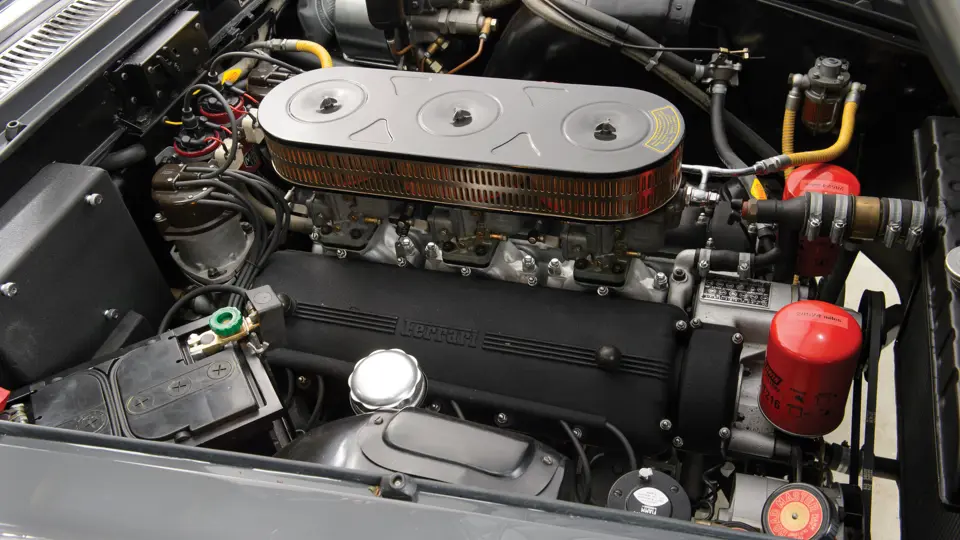
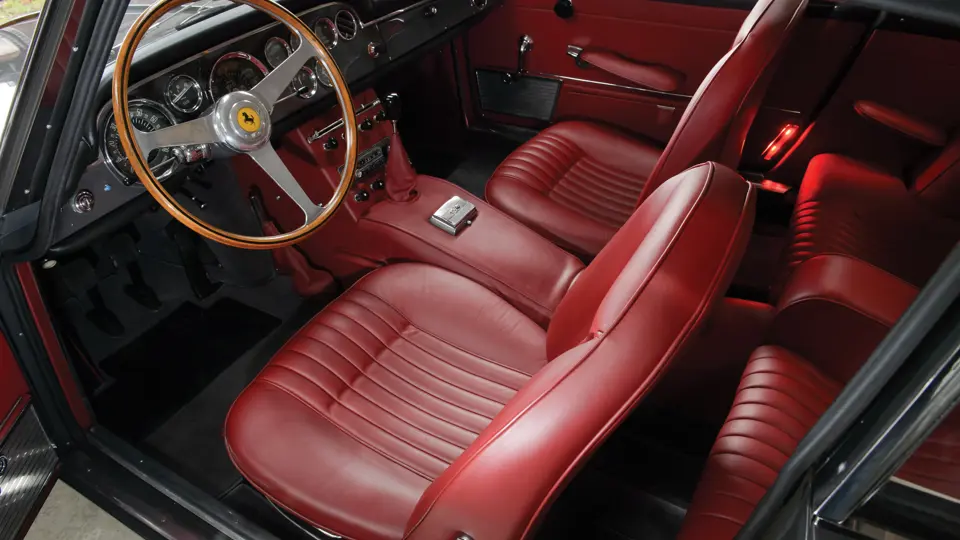

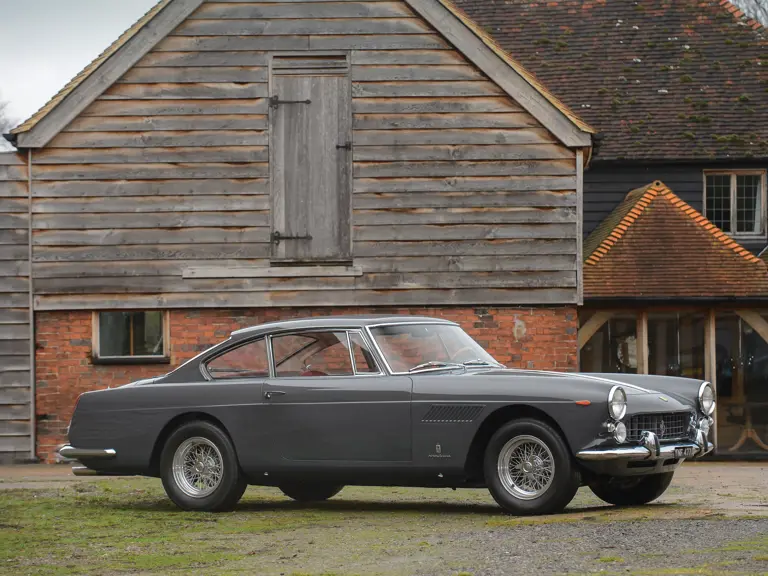

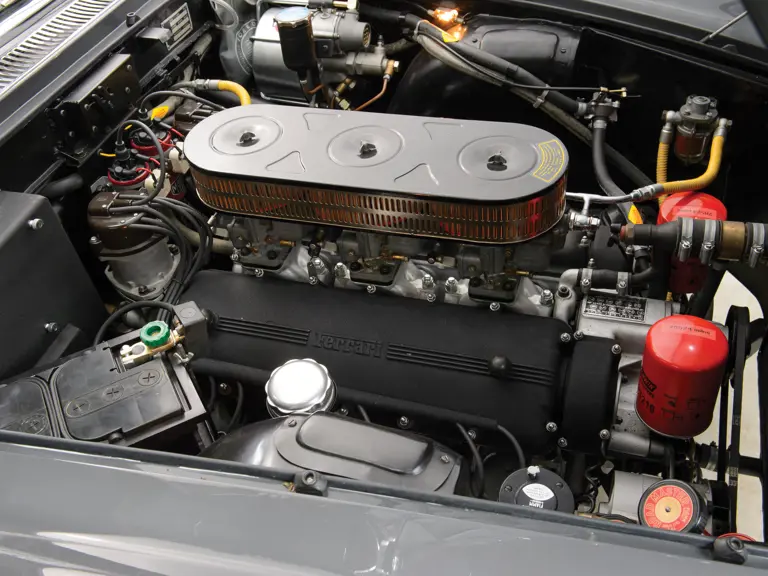
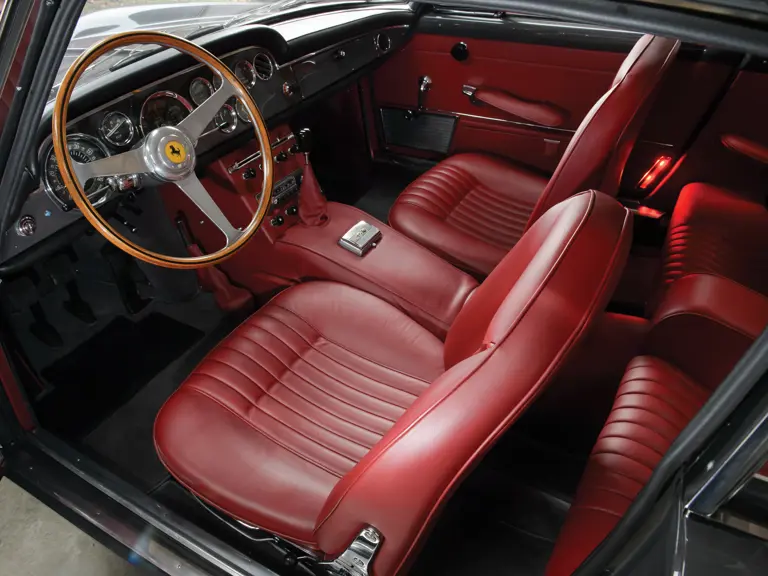

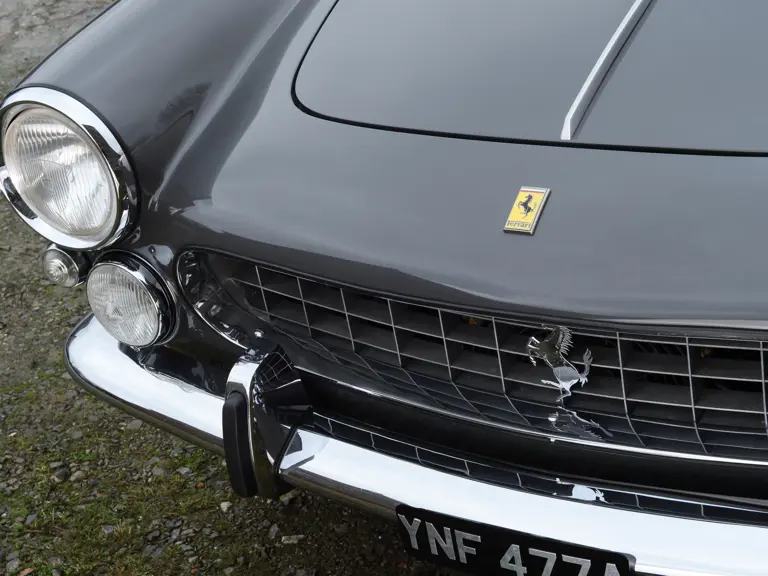
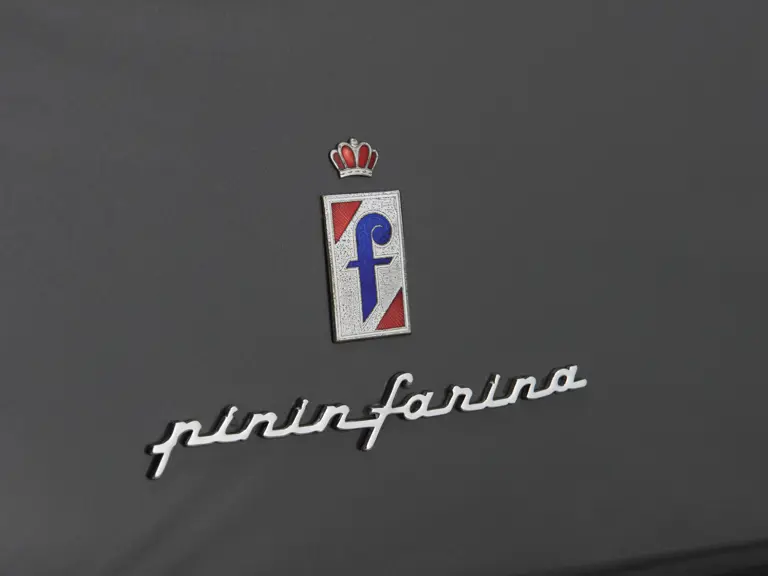
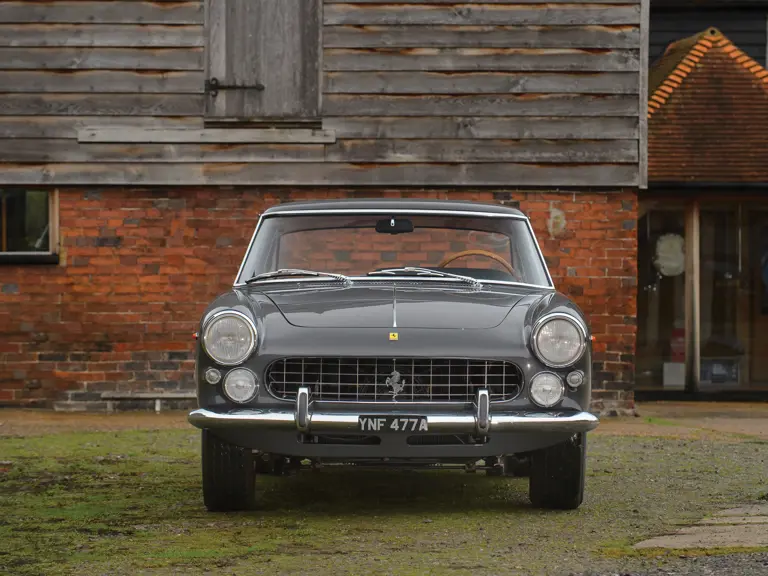
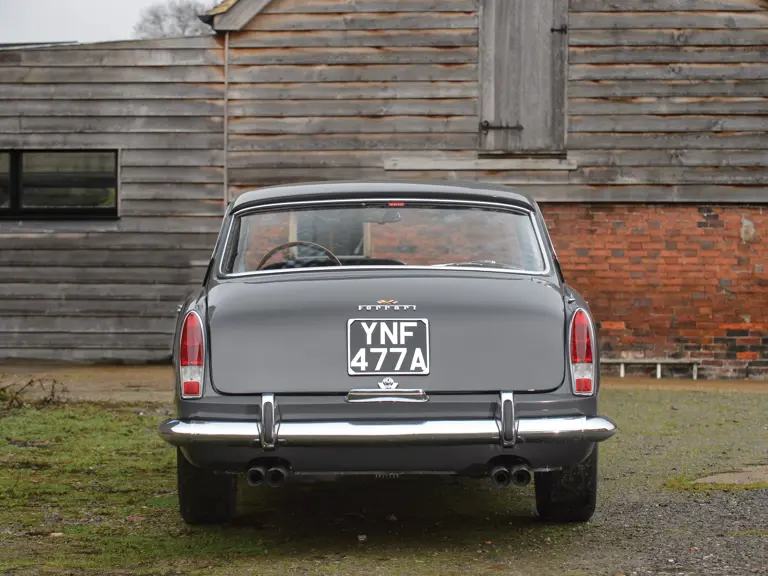

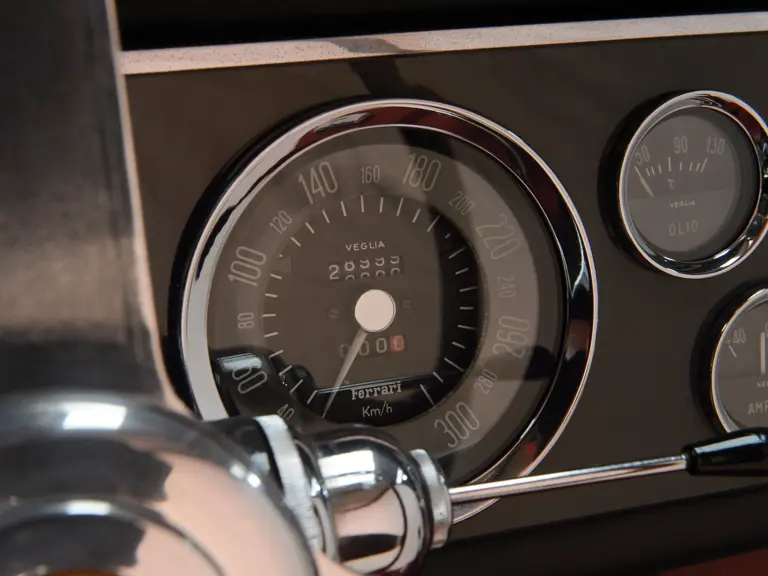
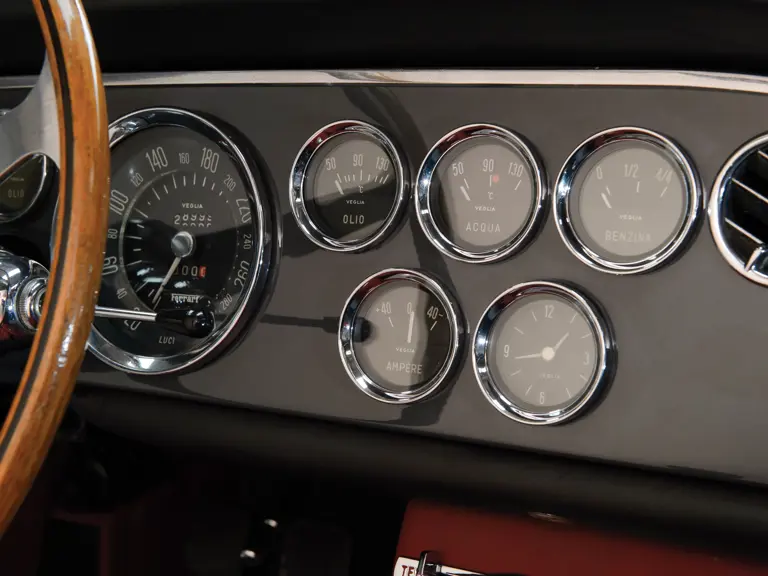

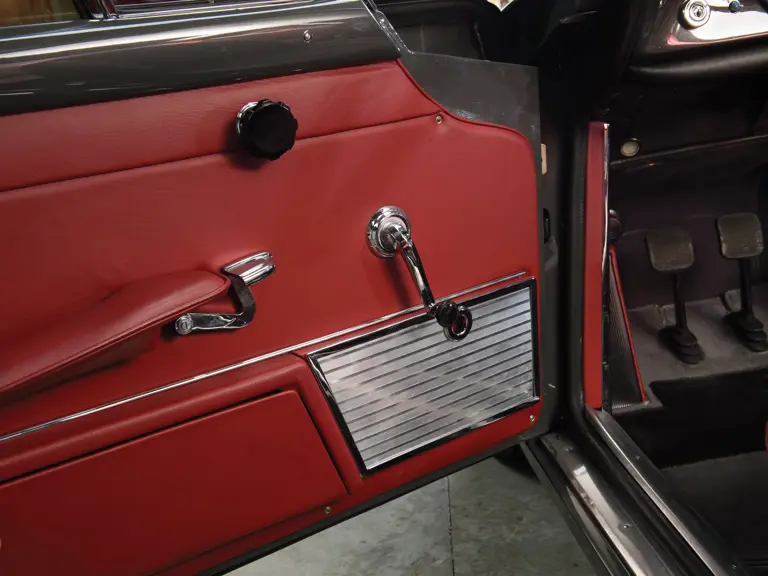
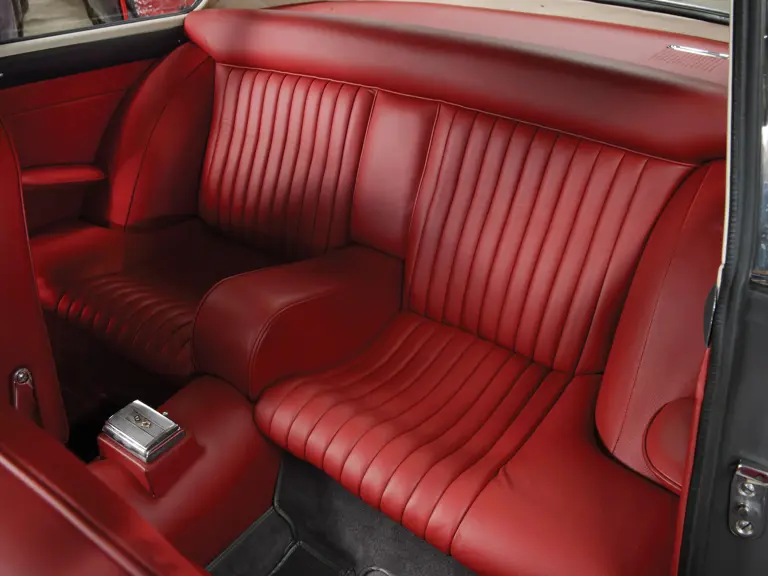
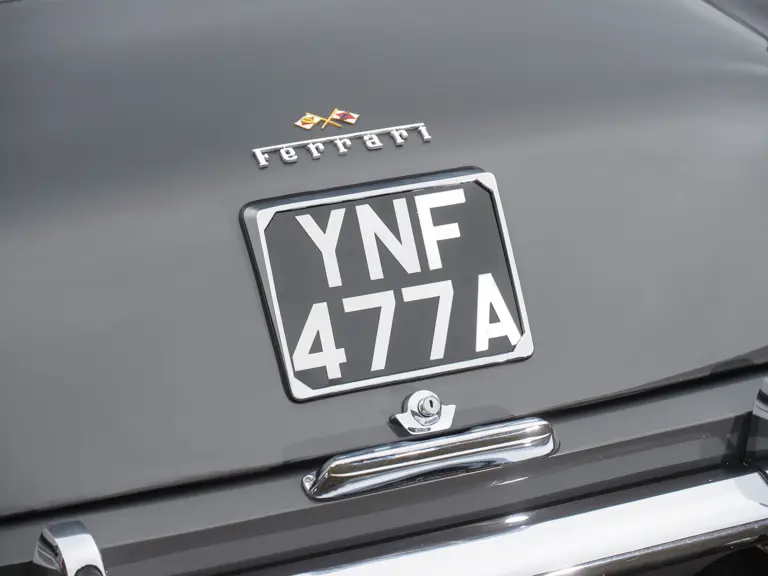
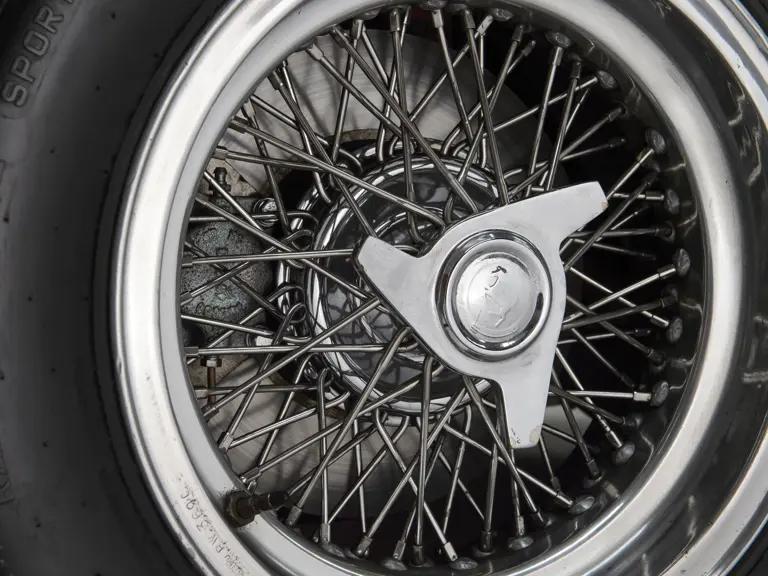

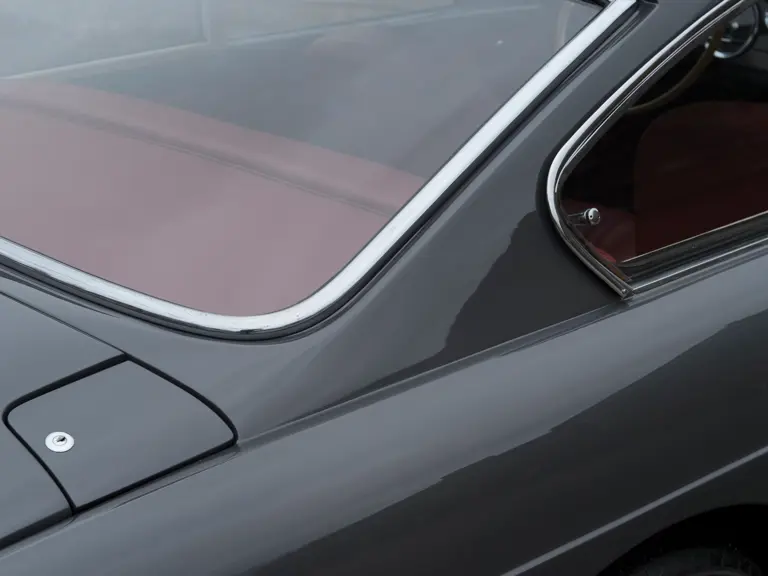

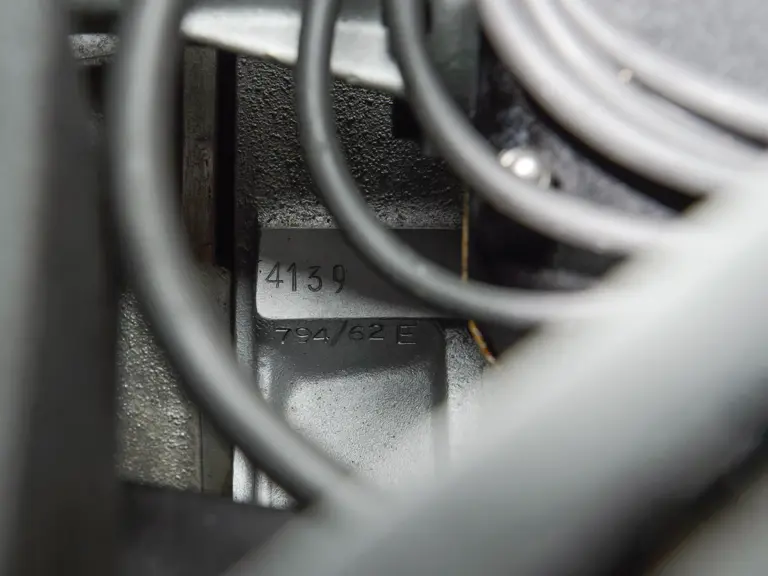

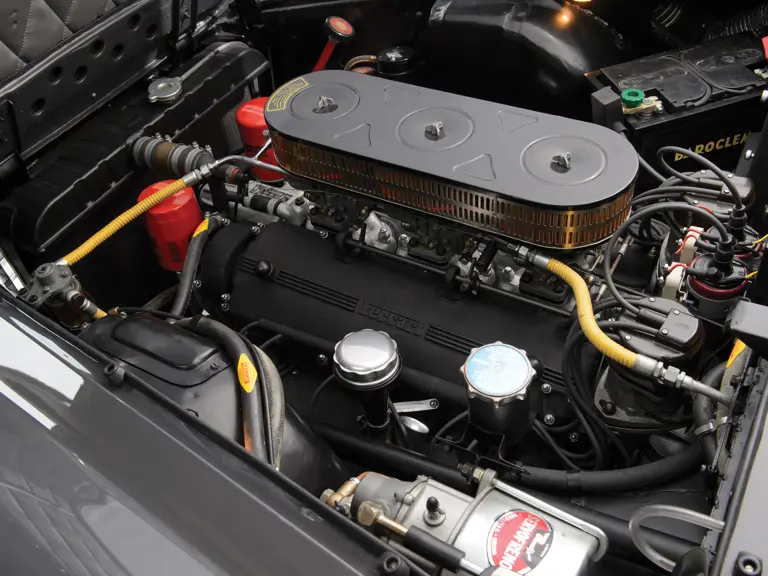
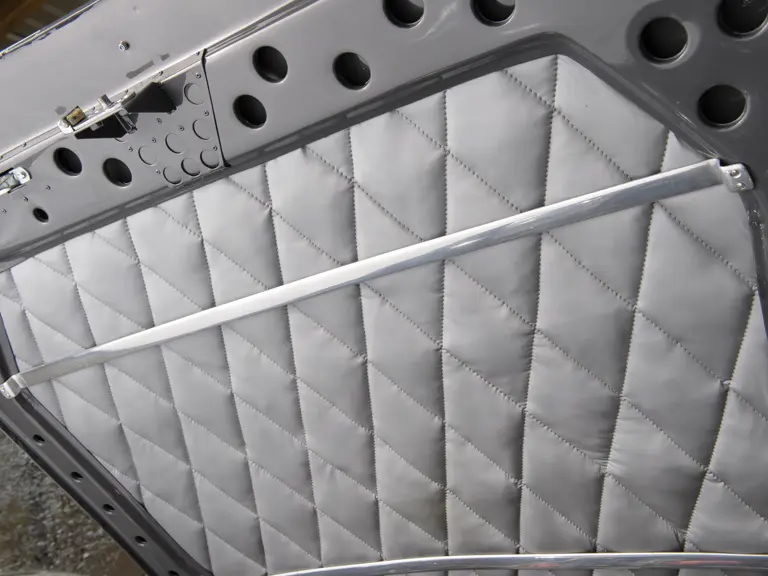
 | Paris, France
| Paris, France
